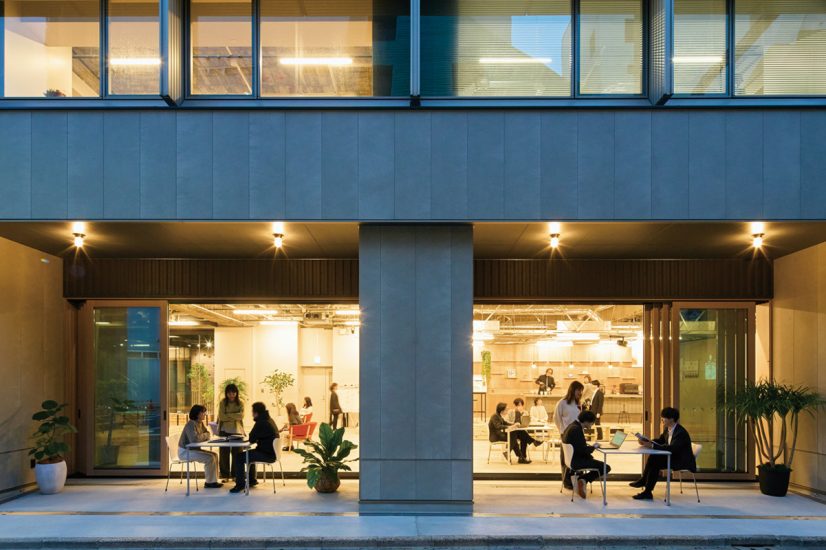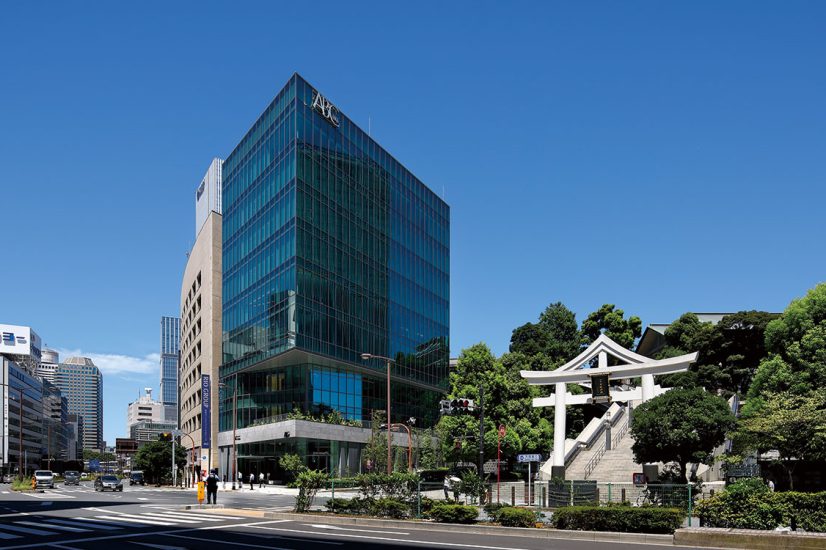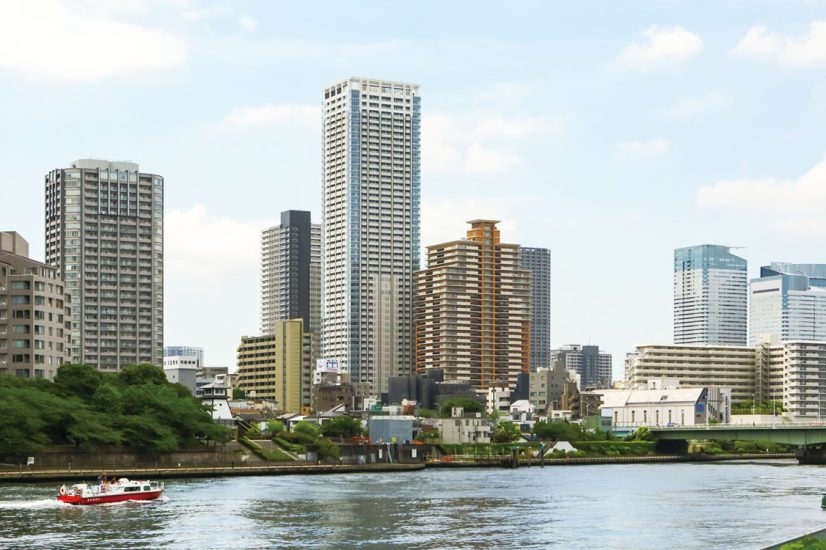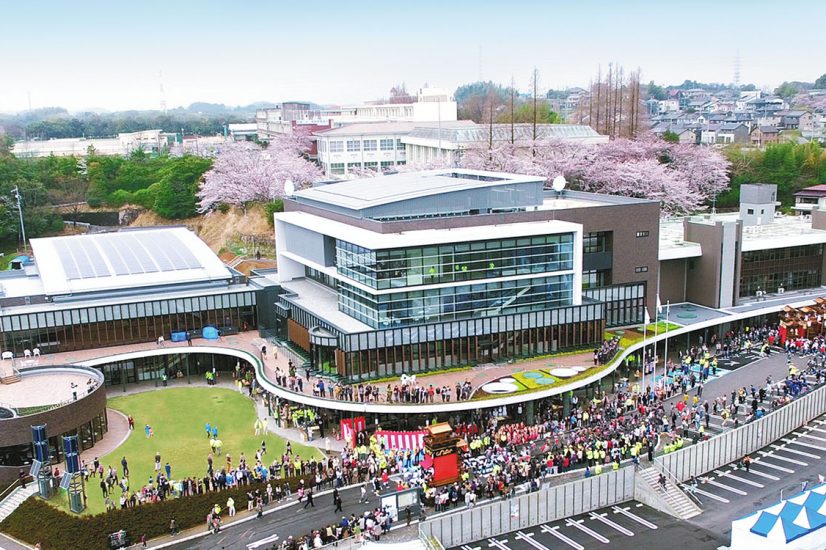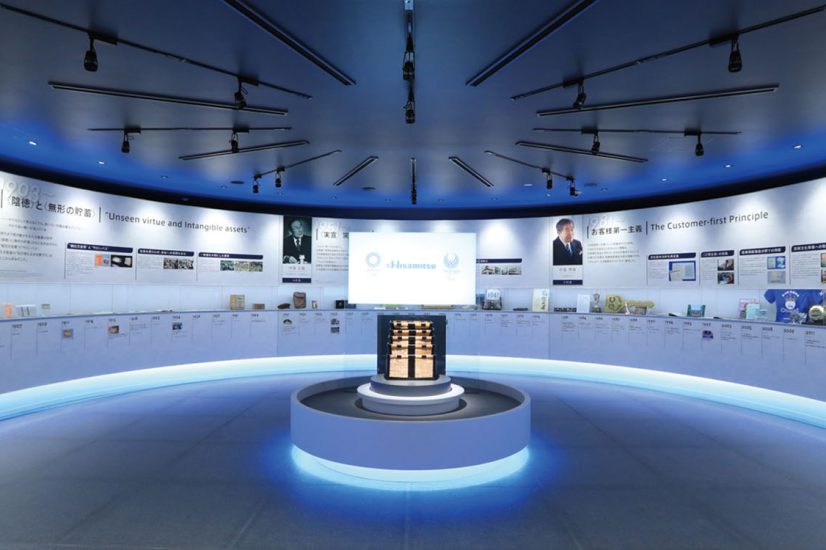Yasui Architects & Engineers, Inc.
Yasui Architects & Engineers, Inc.
Enlivening the town with a narrative building
Handa Red Brick Building
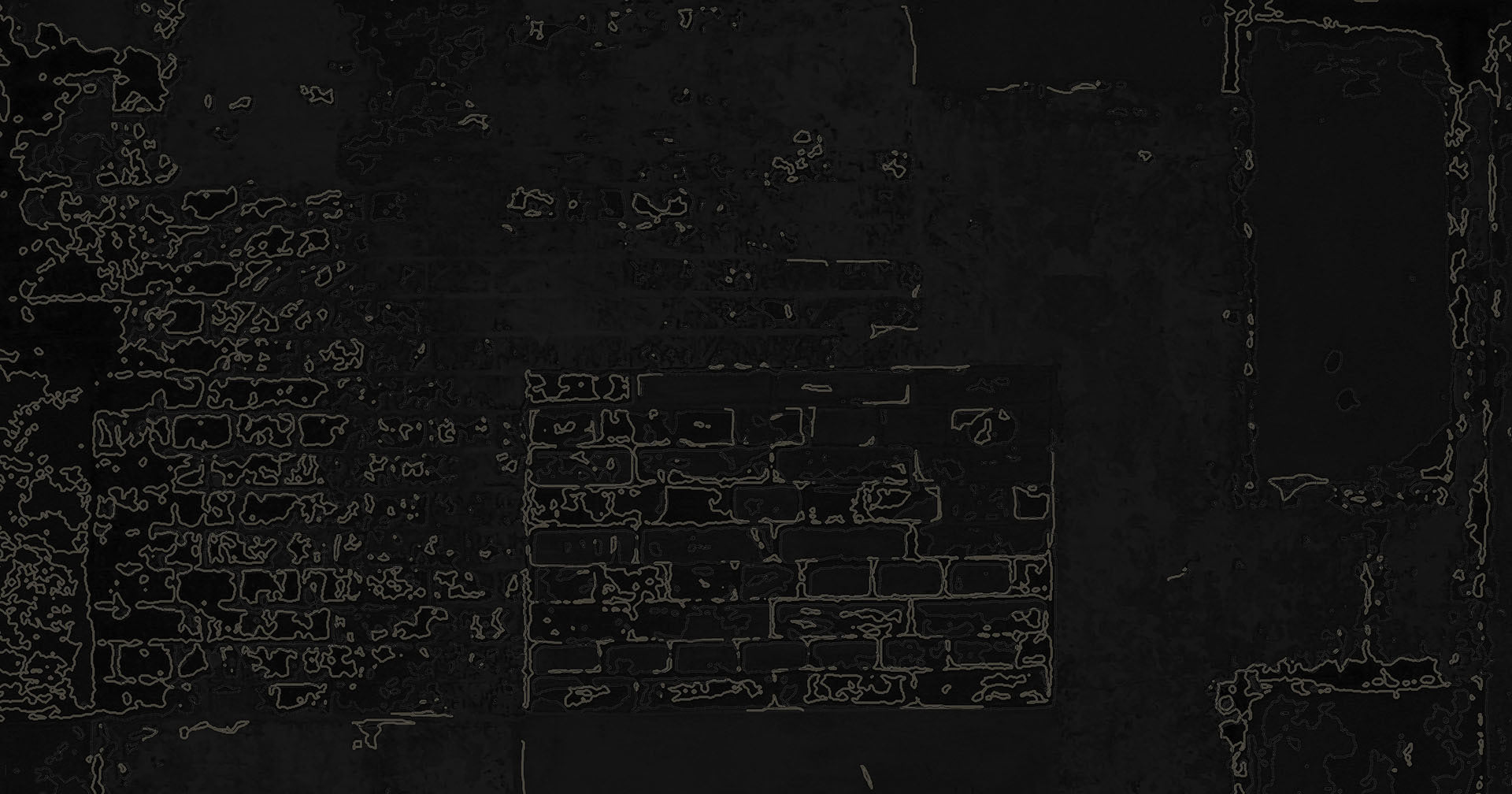
In the quaint “Kura no Machi (storehouse district) ” of Handa, which is perfect for a stroll, a new point of interest has emerged: a refurbished red-brick building that has stood for over 110 years.
Handa City is nestled in the southwestern part of Aichi Prefecture on the central Chita Peninsula . With abundant high-quality groundwater, the town has prospered from brewing and maritime trades since the Edo period, transporting miso, sake, soy sauce, and vinegar to Edo (former Tokyo) by ship. Even today, its unique charm is maintained with the historic black-walled brewing storehouses along the canal. In this “Kura no Machi,” there are numerous places of interest, including historical buildings from the Meiji period and brewing-related facilities representing the town’s culture and traditions, such as Japan’s only vinegar museum and a cultural museum showcasing sake brewing tools and materials. Amongst these cultural and traditional treasures is the “Handa Red Brick Building ,” which has been drawing attention since its public opening in July 2015.
The “Handa Red Brick Building,” designed by Yorinaka Tsumaki , one of the three master architects of the Meiji period, is one of the largest existing brick constructions. Initially founded in 1898 as the manufacturing factory for Kabuto Beer , it was later registered as a National Tangible Cultural Property in 2004 and recognized as a Heritage of Industrial Modernization in 2009. Although this building had changed ownership several times, its original structure and historical significance had been preserved. Valuing the industrial and architectural history, Handa City intended to utilize the building as a modern industrial heritage to benefit its citizens and enhance tourism. At the city’s request, Makoto Motoume from the Business Development Department and Takushi Sugino from the Urban Design Department led this effort. They comment, “We are committed to renovating this building not just as a valuable cultural asset but as a dynamic space that the community and visitors alike can actively utilize, infusing new life into it in line with the city’s vision.”
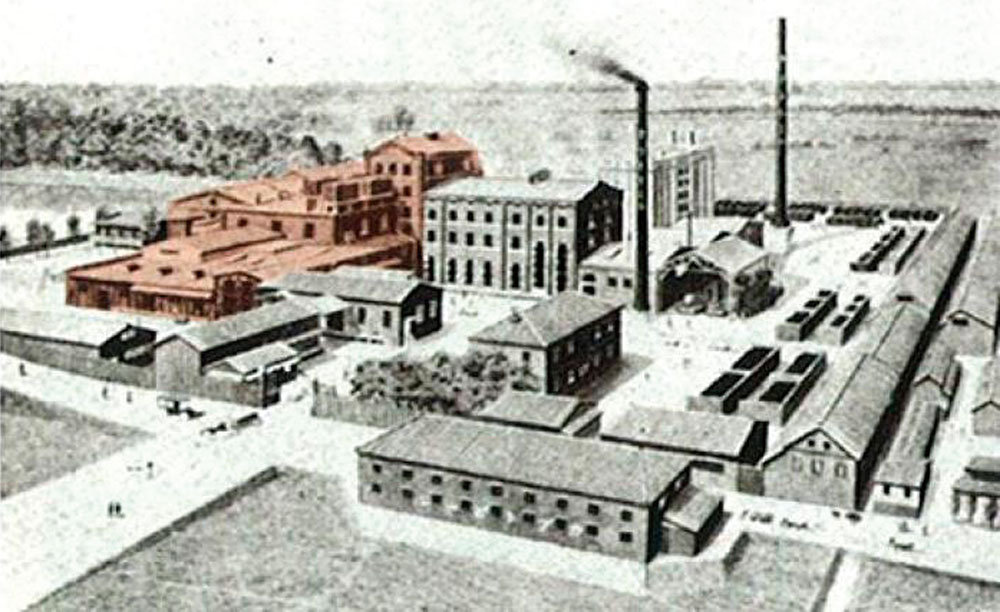
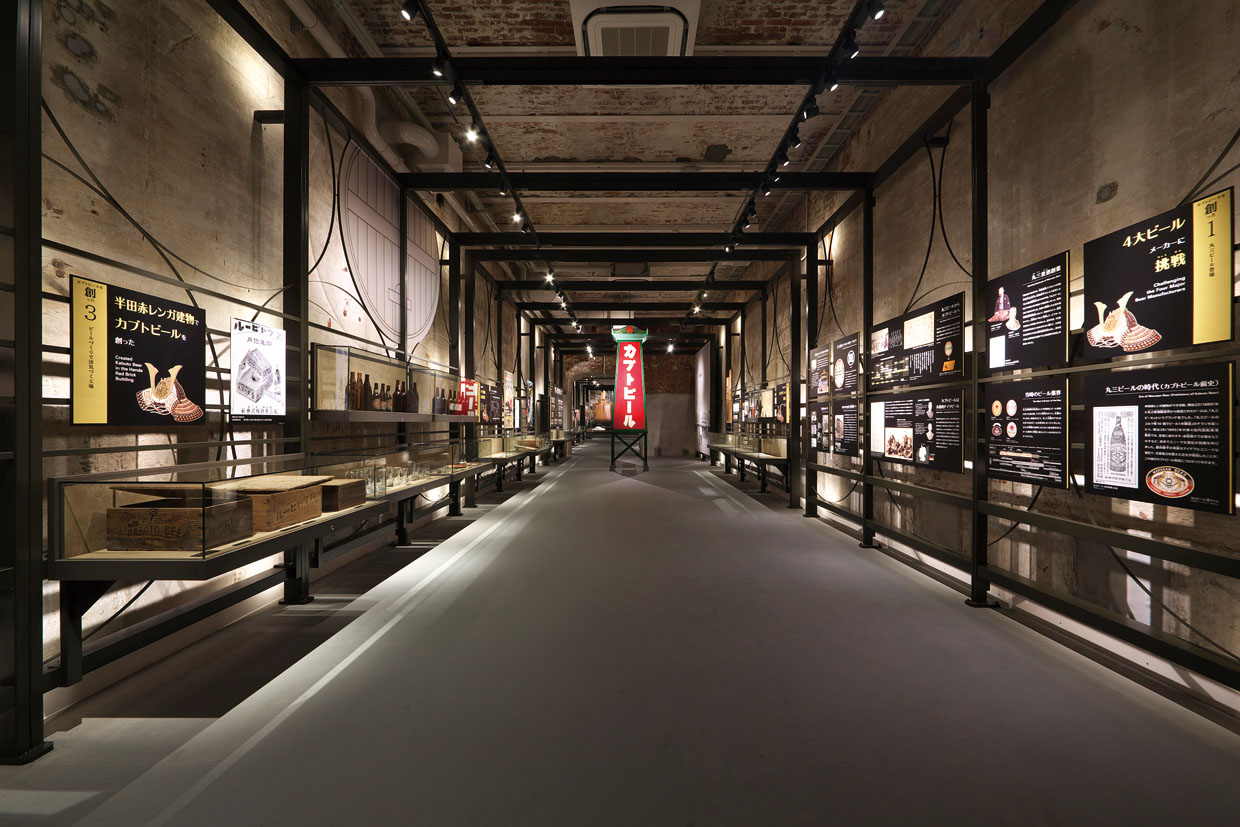
A Red Brick Building was uncovered during demolition.
The city took action to preserve it, undertaking a renovation design project to revitalize its layered history.
The factory, initially built with cutting-edge technology for Kabuto Beer, was repurposed during wartime as a clothing and food warehouse for Nakajima Aircraft Company and post-war as a factory for Nihon Shokuhin Kako . In 1996, as the factory was being dismantled due to the relocation of the company, the red brick structure was discovered. Recognizing its historical significance, Handa City decided to purchase and conserve the building. The subsequent challenge was to determine how it could be utilized as a municipal asset and a source of pride for its citizens. As the building’s interior was inspected, careful considerations were continued regarding its restoration and use at the same time. After 20 years, the building is now open to the public.
Before initiating the renovation design, Makoto Honbai from Handa City and Takashi Sugino from the Chita Peninsula, who are familiar with the local surroundings, created the building’s utilization plan with the perspective of urban design. They remark, “As the area is described as ‘floats, storehouses, Nankichi, and red bricks, Handa City has rich tourism resources with cultural assets, such as the 300-year-old traditional Handa Float Festival, storehouses and canals retaining the Edo period’s vestiges, and the Niimi Nankichi Memorial Museum commemorating the writer of children’s stories. Yet, these were not previously well-integrated. Hence, we planned to use this building as a linchpin for a circuit of tourist attractions, gathering wide-ranging opinions to guide our direction.”
In addition to the survey, a crucial aspect of the renovation was to ensure the building’s safety. Once the strategy for its use was defined, Mitsuru Shimizu joined the detailed renovation design phase as a designer. He notes, “Adapting a historical building for public use necessitates seismic retrofitting as a primary condition under the post-war Building Standard Act and Fire Service Act which were implemented before the building’s completion. We proposed various methods for this issue. Because the Handa Red Brick Building itself is an exhibit, preservation loses its meaning if it is classical only outside and visitors cannot sense its history upon entering. As designers, we’re continually aware of a building’s impact on the town, and particularly in this renovation centered on preserving space, we focused intensely on choosing materials and colors that wouldn't alienate visitors, as well as studying seismic reinforcement.”
Lacking the original blueprints for the over 110-year-old building, the renovation task presented a series of unique challenges. Despite the possibility of bypassing the Building Standard Act by registering it as Cultural Property , the team chose to proceed under current regulations. The renovation involved inserting steel bar reinforcements into the brick walls, to keep the exterior design. Implanting steel bars up to 21 meters long, totaling approximately 8000 meters in length, was indeed a feat of contemporary craftsmanship.
Upon closely inspecting the factory, which had been built with the finest technology available at the time, Motoume and Shimizu made some insightful observations, saying, “The outer walls, with up to four layers of air spaces, and the use of semi-basements, represented insulation techniques aimed at minimizing electricity use. Comparing these with modern materials and technologies, we were often astounded by the ingenuity of those from an era with fewer resources. As designers who also work on factory designs, we speculated whether certain features were for condensation control or water drainage. Identifying similar challenges that we face in our work, and seeing how they were addressed in the past, offered discoveries that one doesn’t encounter with new constructions.”
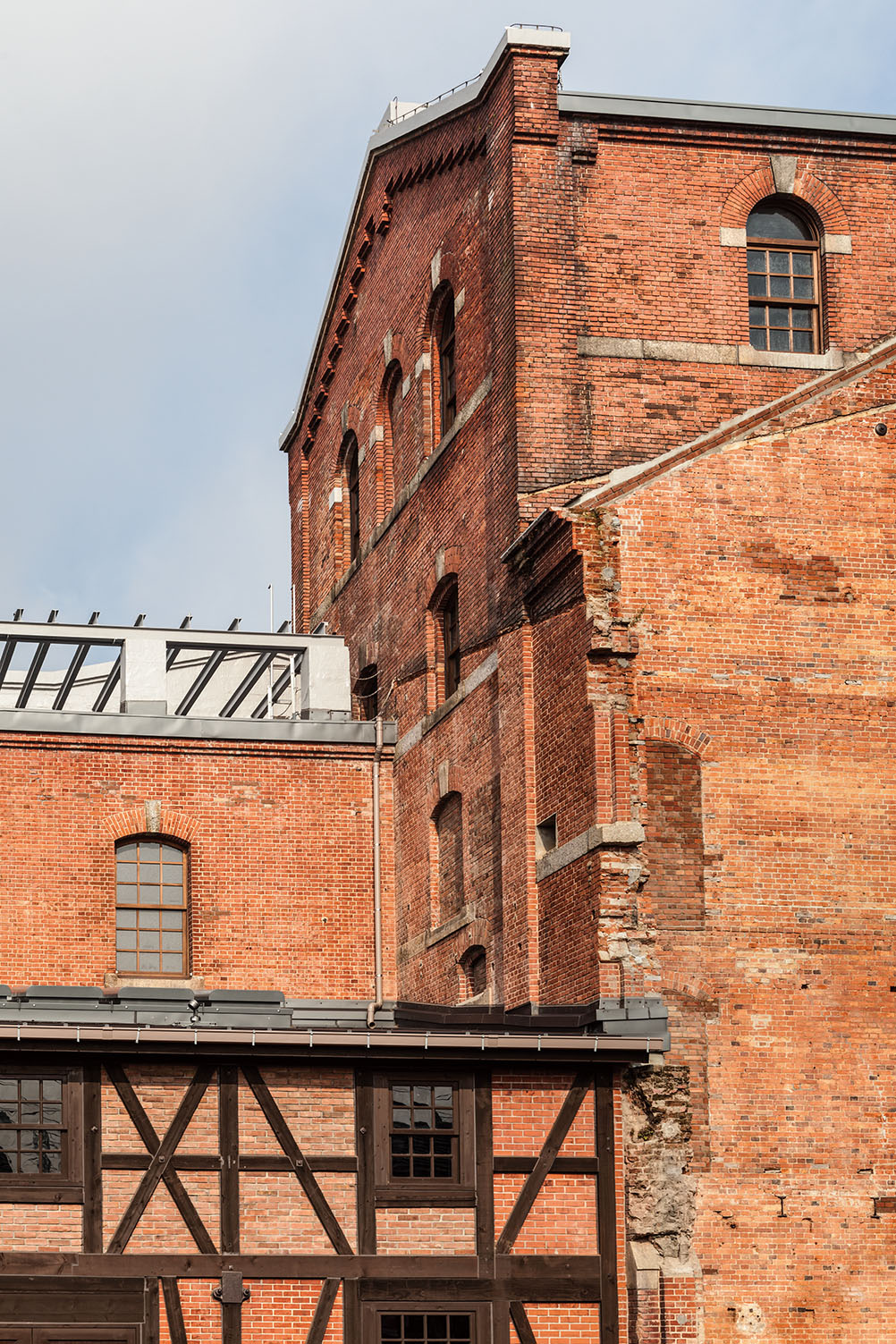
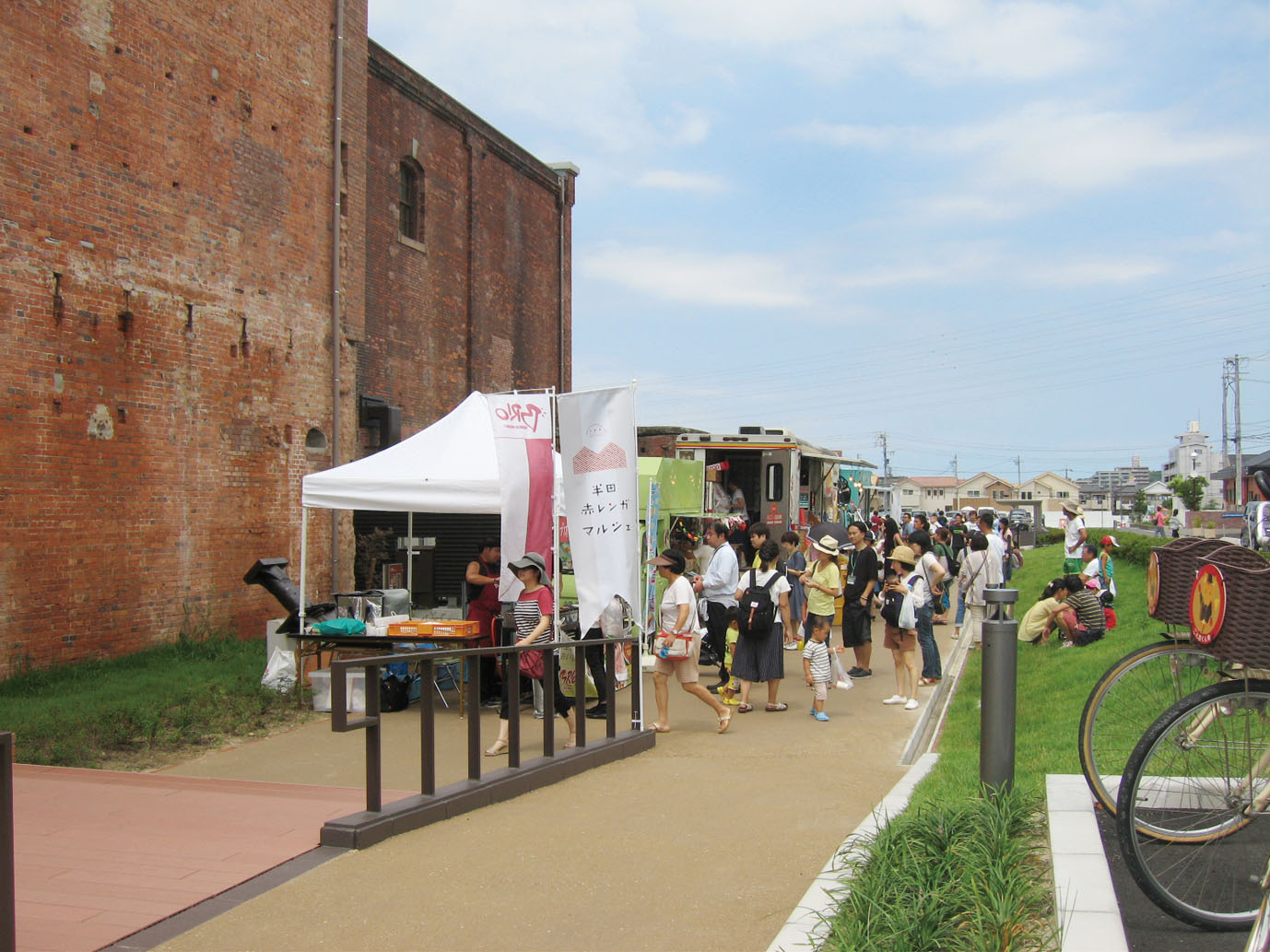
Enduring through epochs: A building intertwined with Handa city’s modern industrial history, serving as a community anchor connecting the local people
In Japan’s high humidity and frequent natural disasters including earthquakes, the count of buildings that have survived over a century is notably low. Even though brick construction is generally perceived as vulnerable to seismic activity, this building has withstood three major regional earthquakes, largely maintaining its original structure, thanks to its meticulous construction with bricks and mortar, reinforcement with insulating double walls, and multi-layered fire-resistant floors.
The remnants of machine-gun fire on the northern wall tell of its wartime resilience, that the building has been exposed to crises yet endured through the eras—a storied “life” that it has led. Shimizu, reflecting on the renovation work, notes, “Buildings, much like humans, possess distinct characteristics at different stages of life: the energetic youth, the prime working age, and the sophisticated middle age. Built with state-of-the-art facilities at inception, they come to need renovations akin to human care over time, and once renovated according to the era’s standards, they resume their path. Witnessing this process was the opportunity to recognize a building as a living entity once again.”
Motoume, with a longstanding connection to the Handa Red Brick Building, having been a frequent visitor since its limited public opening due to local connections, reflects on the deep relationship he developed, saying, “At the time, beer brewing was predominantly a venture of large cities, yet this building is a testament to the audacious challenge taken by a regional entity, daring to engage in beer production. They entrusted the design to Mr. Tsumaki, celebrated as one of the three master architects of the Meiji era. It was the forward-thinking nature of those ancestors that brought the red brick building to life. Inspired by people’s passion for preserving and harnessing it as a treasure for the town, we have met numerous individuals through this project. We sourced bricks produced in nearly the same period for the necessary restoration, and as we researched the town and building’s history for its exhibition, we formed bonds with collectors of Kabuto Beer memorabilia. This project was characterized by a series of fortuitous meetings, progressing as if driven by fate.”
Renovations, where the exact state of the structure is unknown until the process begins, bring unique challenges, particularly in managing schedules and costs. Yet, as the surging interest in Japan’s modern industrial heritage indicates, such as seen in educational adult excursions, the effort to preserve a building with a story that overlaps with the city’s modern narrative is more than justifiable. It’s a fulfilling endeavor for the architects, undoubtedly worth the intricate challenges it presents.
